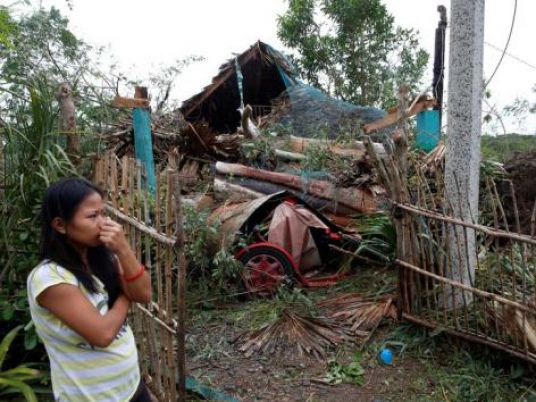
Typhoon Haima forced the evacuations of more than 50,000 people in southern China after hammering the northern Philippines with ferocious wind and rain, triggering flooding, landslides and power outages and killing at least 13 people.
No deaths were immediately reported Saturday in China from the typhoon. Residents in the cities of Shanwei and Shantou, in China's Guangdong province, were forced to move to safer ground as the storm hit, local authorities and state media reported. Some villages experienced power outages and authorities remained on the lookout for possible landslides.
Chinese meteorological services said the typhoon made landfall shortly after noon Friday in Shanwei in Guangdong province, packing winds of up to 166 kilometers (103 miles) per hour before weakening to a tropical storm.
China suspended dozens of flights and rail services in several southern provinces. In the city of Shenzhen, authorities ordered schools, markets and factories to close, halted public transportation and evacuated some areas.
Neighboring Hong Kong suspended trading on the stock market Friday and shut down schools, offices and commuter ferries as Haima lashed the financial hub with rain and wind gusts of up to 109 kph (68 mph). The third most serious storm signal was hoisted, leaving an eerie calm in the streets of the normally bustling city. More than 740 flights to and from the city's international airport were canceled or delayed.
In the Philippines, Haima's blinding winds and rain on Thursday had rekindled fears of the catastrophe wrought by Typhoon Haiyan in 2013, which left 7,300 dead, but there has been no report of any major damage. Large casualties appeared to have been averted after more than 100,000 people fled to safer ground. Several villages were cut off by fallen trees, landslides and floods, impeding communications and aid.
At least 13 people were killed, mostly in landslides and floods, in the fast-moving storm, officials said. But the evacuations from high-risk communities helped prevent a larger number of casualties and thousands were still in emergency shelters due to a powerful that hit the north a few days.
The extent of damage in Cagayan, about 500 kilometers (310 miles) north of Manila, where the typhoon made landfall, was evident in overturned vans, toppled or leaning electric posts and debris blocking roads. Most stores, their window panes shattered and canopies shredded by the wind, were closed.




